For the 2025 school year, there is 1 public preschool serving 536 students in Asheboro City Schools School District. This district's average pre testing ranking is 2/10, which is in the bottom 50% of public pre schools in North Carolina.
ÎÛÎÛÂþ» Preschool in Asheboro City School School District have an average math proficiency score of 39% (versus the North Carolina public pre school average of 51%), and reading proficiency score of 27% (versus the 46% statewide average).
Minority enrollment is 80% of the student body (majority Hispanic), which is more than the North Carolina public preschool average of 59% (majority Black and Hispanic).
Overview
This School District
This State (NC)
# Schools
8 Schools
994 Schools
# Students
4,363 Students
464,055 Students
# Teachers
310 Teachers
33,275 Teachers
Student : Teacher Ratio
14:1
14:1
District Rank
Asheboro City Schools School District, which is ranked within the bottom 50% of all 320 school districts in North Carolina (based off of combined math and reading proficiency testing data) for the 2021-2022 school year.
The school district's graduation rate of 86% has decreased from 92% over five school years.
Overall District Rank
#250 out of 325 school districts
(Bottom 50%)
(Bottom 50%)
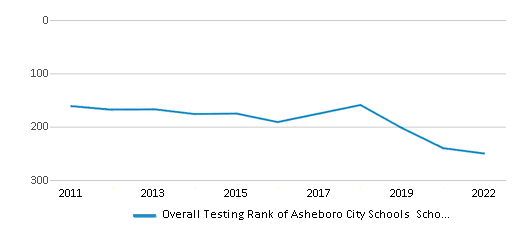
Math Test Scores (% Proficient)
39%
51%

Reading/Language Arts Test Scores (% Proficient)
35%
50%

Science Test Scores (% Proficient)
53%
63%
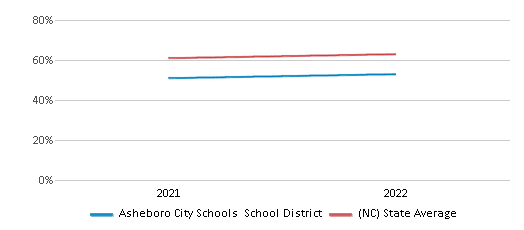
Graduation Rate
86%
86%

Students by Ethnicity:
Diversity Score
0.64
0.72
# American Indian Students
7 Students
6,572 Students
% American Indian Students
n/a
1%
# Asian Students
65 Students
18,458 Students
% Asian Students
1%
4%
# Hispanic Students
2,310 Students
105,943 Students
% Hispanic Students
53%
23%
# Black Students
613 Students
114,509 Students
% Black Students
14%
25%
# White Students
1,122 Students
189,147 Students
% White Students
26%
41%
# Hawaiian Students
2 Students
648 Students
% Hawaiian Students
n/a
n/a
# Two or more races Students
244 Students
28,778 Students
% of Two or more races Students
6%
6%
Students by Grade:
# Students in PK Grade:
-
23,104
# Students in K Grade:
354
72,144
# Students in 1st Grade:
339
74,289
# Students in 2nd Grade:
342
75,942
# Students in 3rd Grade:
330
68,925
# Students in 4th Grade:
336
69,686
# Students in 5th Grade:
328
66,668
# Students in 6th Grade:
333
5,021
# Students in 7th Grade:
342
3,684
# Students in 8th Grade:
333
3,629
# Students in 9th Grade:
360
214
# Students in 10th Grade:
344
194
# Students in 11th Grade:
362
187
# Students in 12th Grade:
260
368
# Ungraded Students:
-
-
District Revenue and Spending
The revenue/student of $11,987 is higher than the state median of $11,187. The school district revenue/student has stayed relatively flat over four school years.
The school district's spending/student of $12,650 is higher than the state median of $11,612. The school district spending/student has stayed relatively flat over four school years.
Total Revenue
$52 MM
$17,307 MM
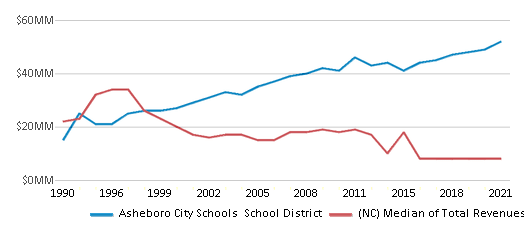
Spending
$55 MM
$17,964 MM
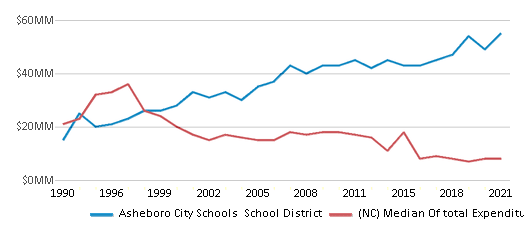
Revenue / Student
$11,987
$11,187
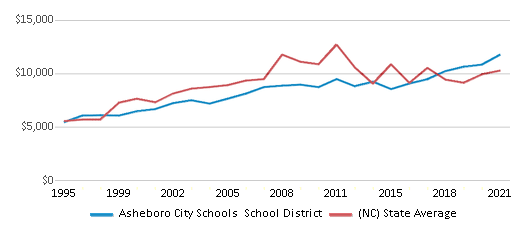
Spending / Student
$12,650
$11,612
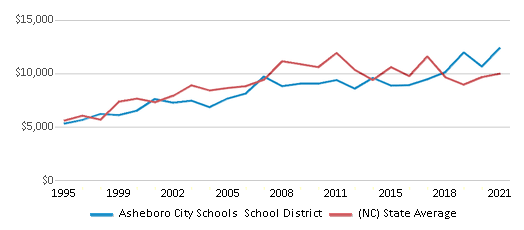
Best Asheboro City Schools School District ÎÛÎÛÂþ» Preschools (2025)
School
(Math and Reading Proficiency)
(Math and Reading Proficiency)
Location
Grades
Students
Rank: #11.
Balfour Elementary School
(Math: 39% | Reading: 27%)
Rank:
Rank:
2/
Bottom 50%10
2097 N Asheboro School Rd
Asheboro, NC 27203
(336) 672-0322
Asheboro, NC 27203
(336) 672-0322
Grades: PK-5
| 536 students
Recent Articles

Year-Round Or Traditional Schedule?
Which is more appropriate for your child? A year-round attendance schedule or traditional schedule? We look at the pros and cons.

Why You Should Encourage Your Child to Join a Sports Team
Participating in team sports has a great many benefits for children, there is no doubt. In this article you will learn what those benefits are.

White Students are Now the Minority in U.S. ÎÛÎÛÂþ» Schools
Increasing birth rates among immigrant families from Asia and Central and South America, combined with lower birth rates among white families, means that for the first time in history, public school students in the United States are majority-minority. This shift in demographics poses difficulties for schools as they work to accommodate children of varying language abilities and socio-economic backgrounds.





